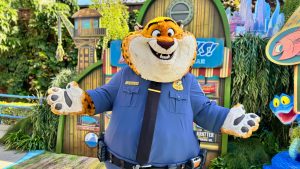When Walt Disney Co.'s (DIS) chief creative officer, John A. Lasseter, went hunting recently for someone to direct Disney's big-budget animated flick American Dog, he turned to Chris Williams, a first-time feature film director whose main experience working on features was as a story artist for movies like Chicken Little. It was a big jump for Williams, but Lasseter had liked what he'd seen in Golgo's Guest, a quirky five-minute short film Williams directed, featuring a lonely Russian soldier visited by a flying saucer.
Williams' little film was created as part of a ramped-up Disney program to make five-minute shorts and blast some creative energy into a once-vaunted animation studio. The unit has been down on its luck, having suffered such disappointments as Home on the Range and Brother Bear. By inviting midlevel creative employees to try their hands at directing, the program serves as a testing ground for young talent and new ways to make feature films. The risks are low: These shorts cost $2 million or less to make, compared with feature films that usually cost $100 million or more. "This is a business that thrives on new ideas and better ways of doing things. We can do both, and in a way that's cost-effective as well," says Disney Animation President Edwin E. Catmull.
The shorts program is a window into how Disney is being reanimated by Lasseter and Catmull. The two creative czars hail from Pixar Animation Studios Inc. (DIS), which Disney acquired in 2006 for $7.4 billion. During a remarkable streak of seven blockbusters in 11 years, Pixar also fine-tuned the art of making shorts, winning six Oscars.
As part of the Disney program, the former Pixar duo established a "story trust" of experienced directors who give guidance to up-and-comers. They help select promising shorts to put into production and then review their progress. The shorts program is also used to show veteran animators new tricks. One of the six shorts in development, The Ballad of Nessie, about the Loch Ness monster, features characters wearing kilts. It's partly an exercise in helping animators improve their skills at drawing fabric in a naturalistic way.
The first short that will show in theaters is a slapstick called How to Hook Up Your Home Theater. In it, classic Disney character Goofy fumbles his way through turning his home into an entertainment palace. It will be co-directed by Stevie Wermers, a former story editor who hopes to become the first woman to direct a Disney animated film. The short will test Lasseter's strategy of returning Disney to its tradition of using hand-drawn animation–which he hopes will help it stand out in a crowded field of computer-generated features.
The program harkens back to Disney's past. In the 1930s, Walt Disney pioneered the animated short as a way of keeping his animators sharp while waiting for the script for Snow White and the Seven Dwarfs to finish. There's even a piece of this new program that's aimed at employees who don't draw for a living. By joining the "Shorts Club," anybody from a secretary to a tech help-desk employee can gain access to a computer workstation in their off-hours to make a five-minute cartoon. These likely won't make it to a theater. But they could help get everybody in the organization excited about what they're doing.
Disney Bets Long on Film Shorts
Comments
Geeks Corner
Recent Posts
- Clawhauser Joins Judy Hopps & Nick Wilde From ‘Zootopia 2’ at Disney California Adventure

- A Christmas Fantasy Parade – A Month of Thanksgiving

- Adventure Way to Be a Magical Pathway to Adventure at Disneyland Paris

- Disneyland Paris Reveals Details About New Nighttime Spectacular at Disney Adventure World, ‘Disney Cascade of Lights’

- Disneyland Paris Reveals Opening Date for World of Frozen and Re-Imagined Disney Adventure World

